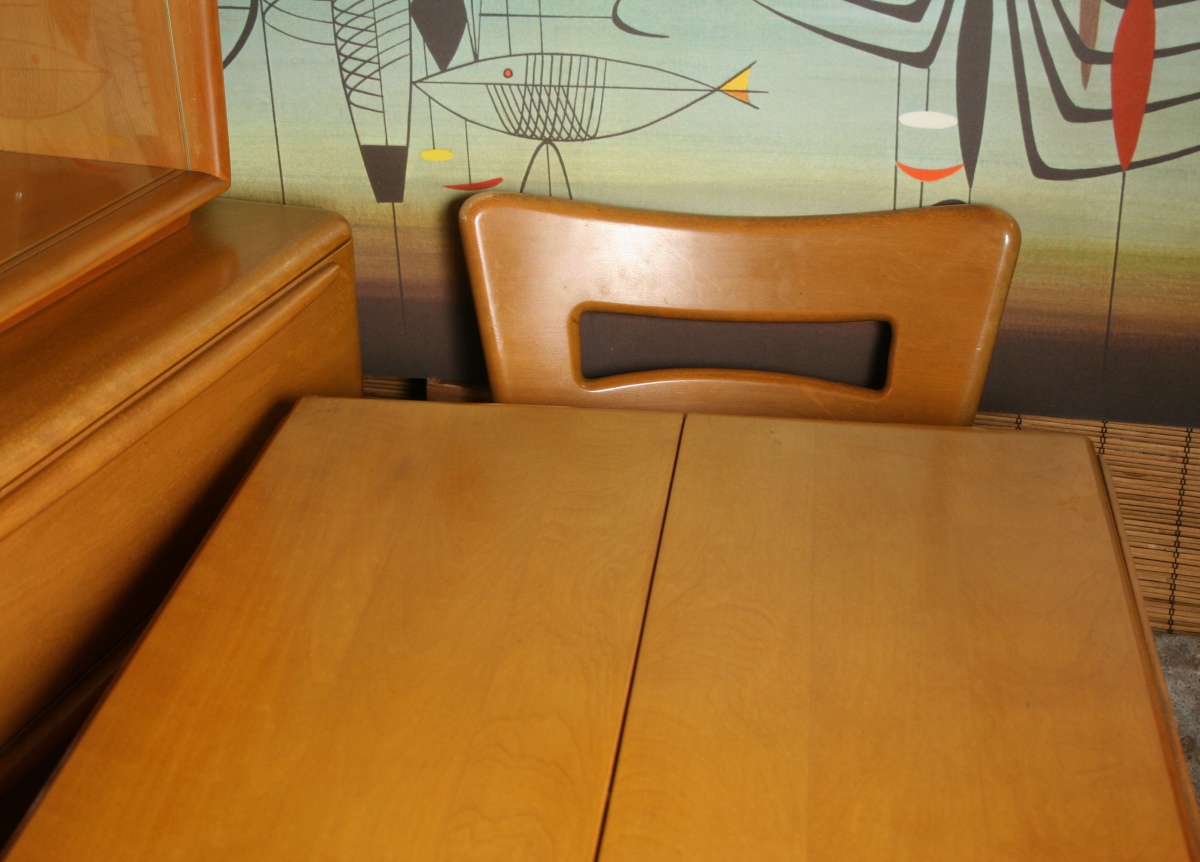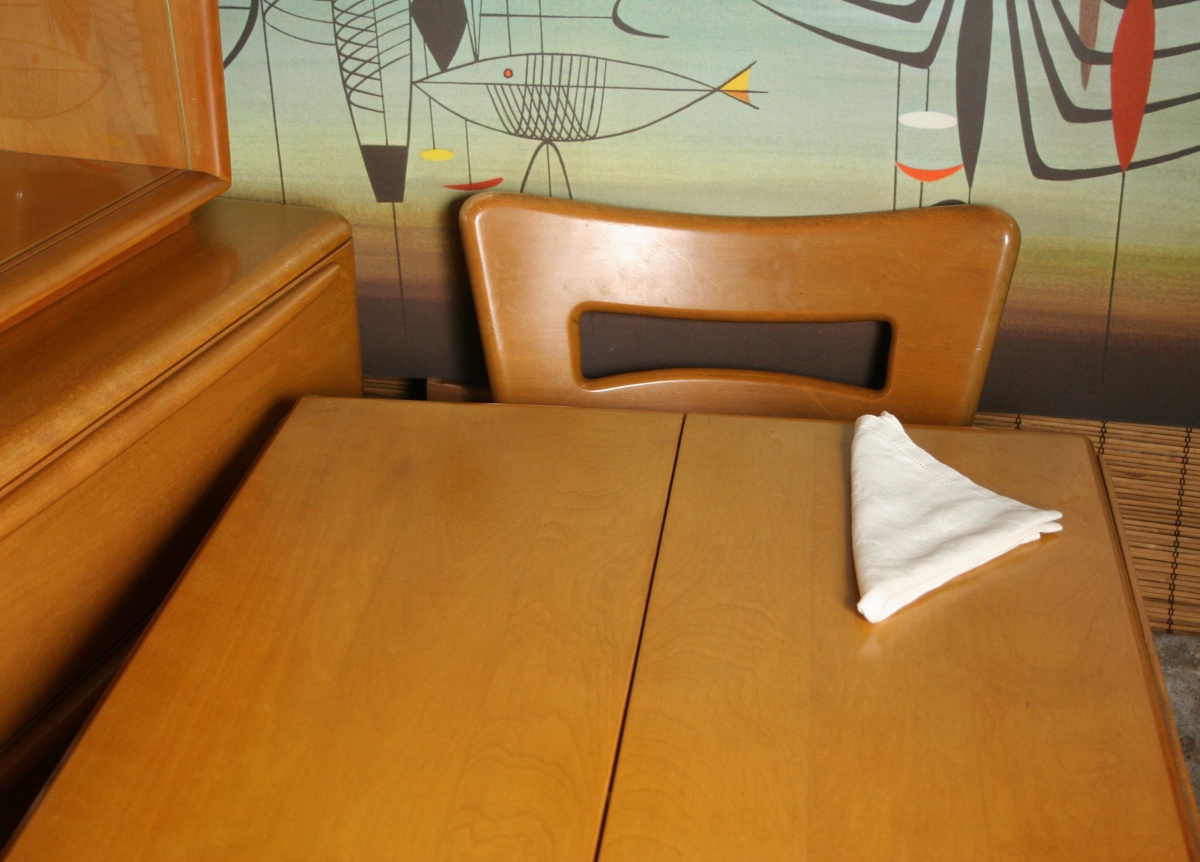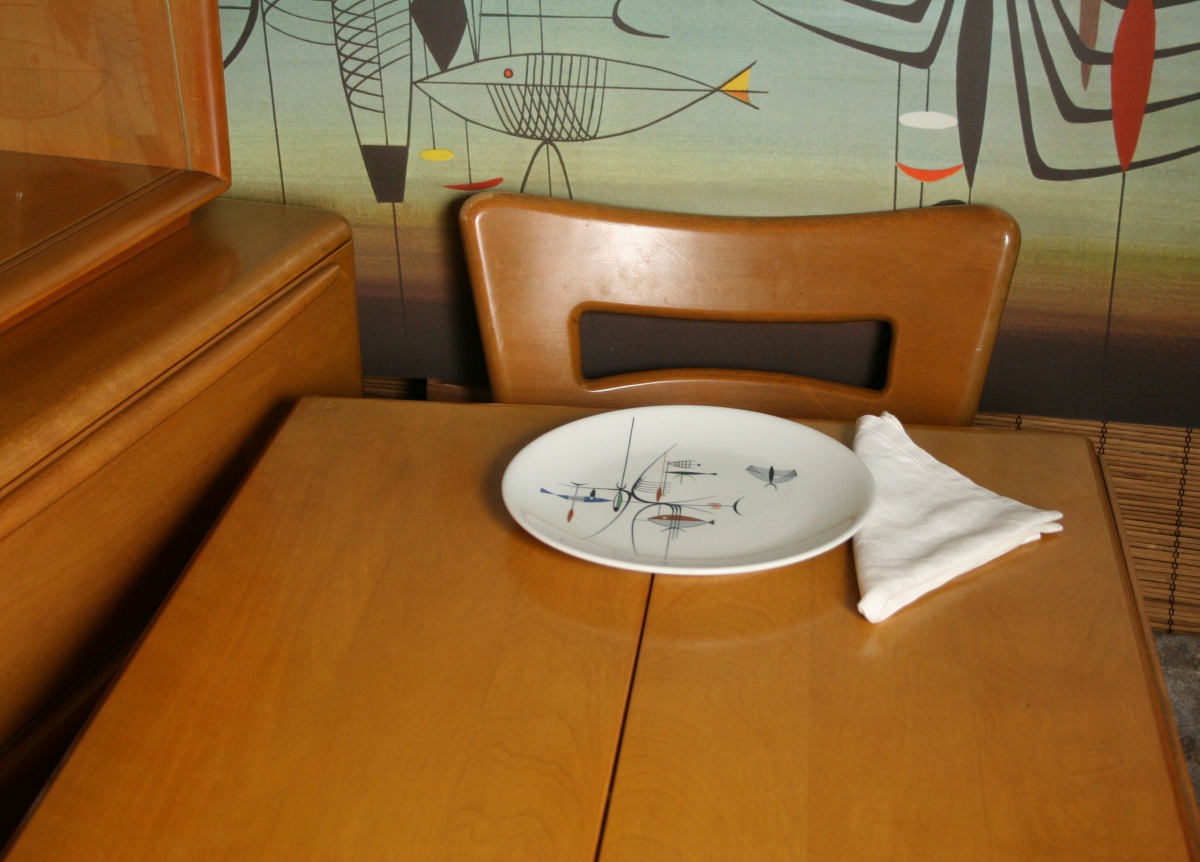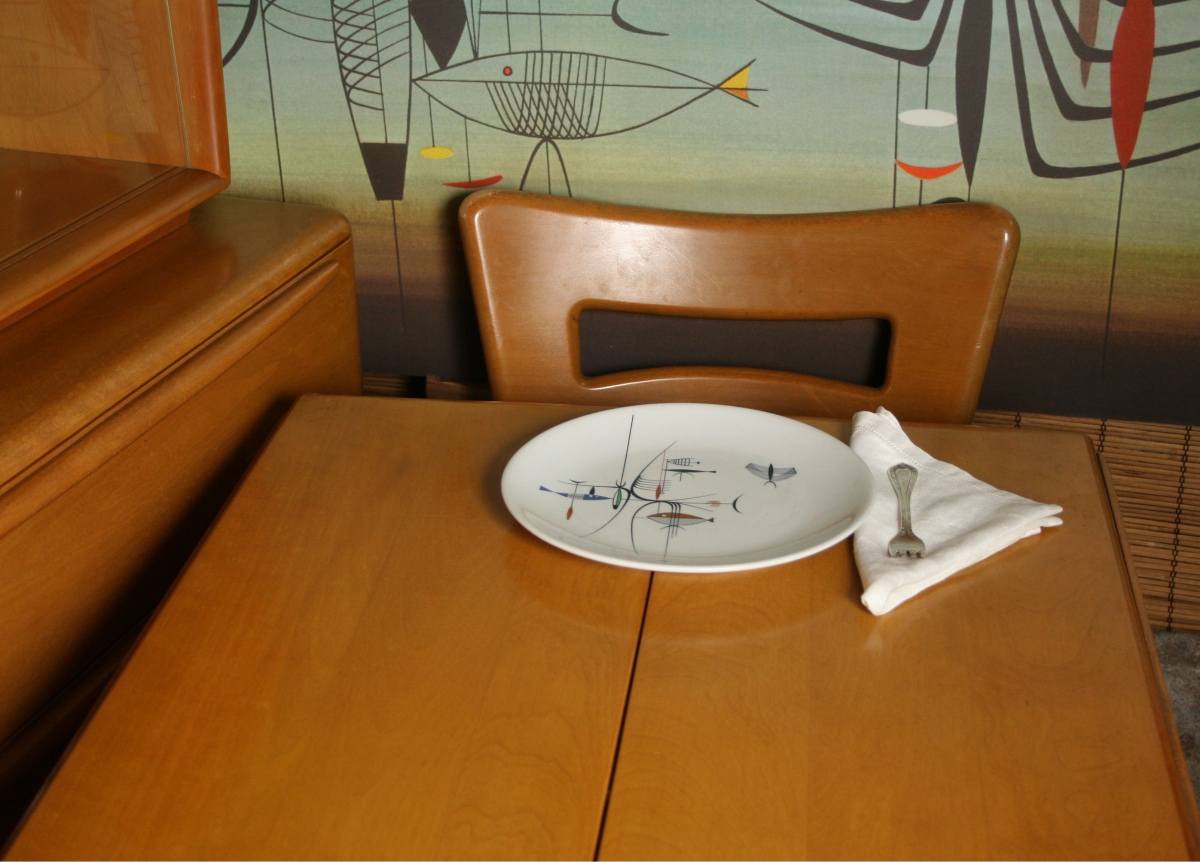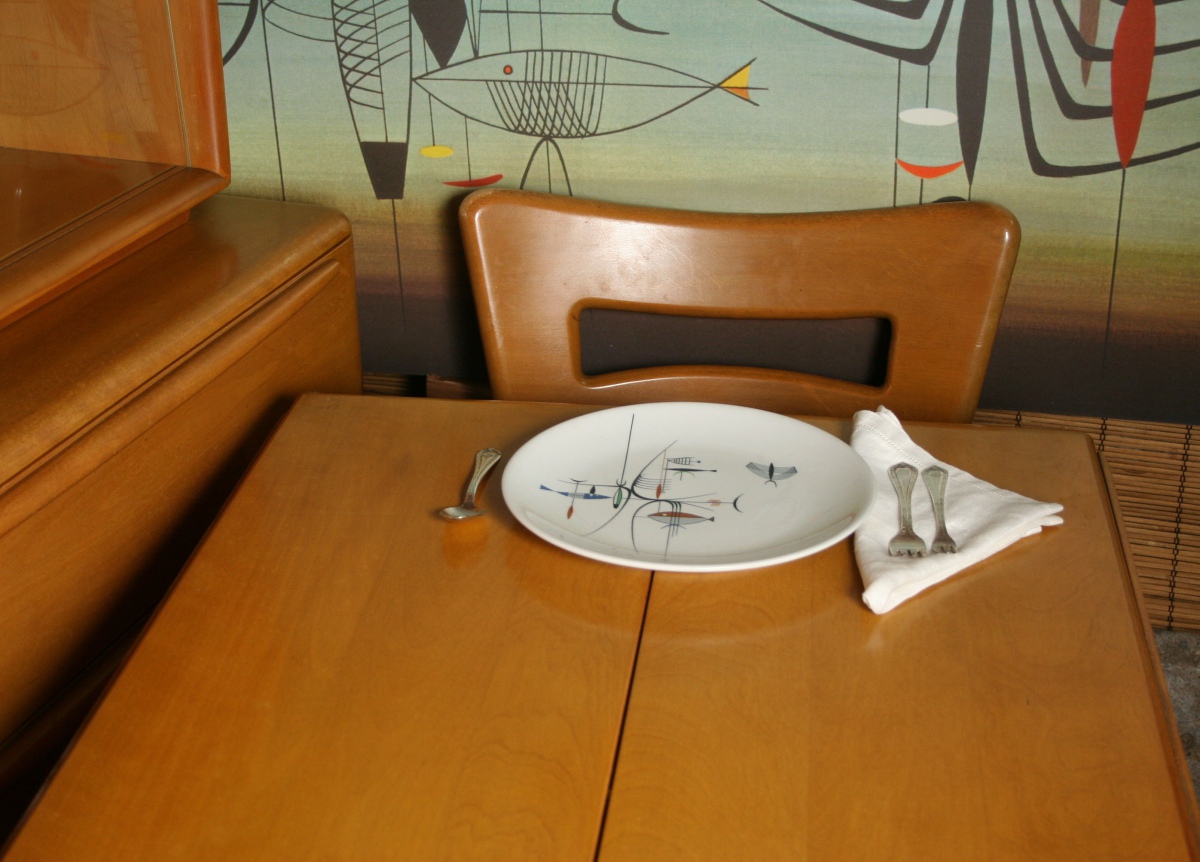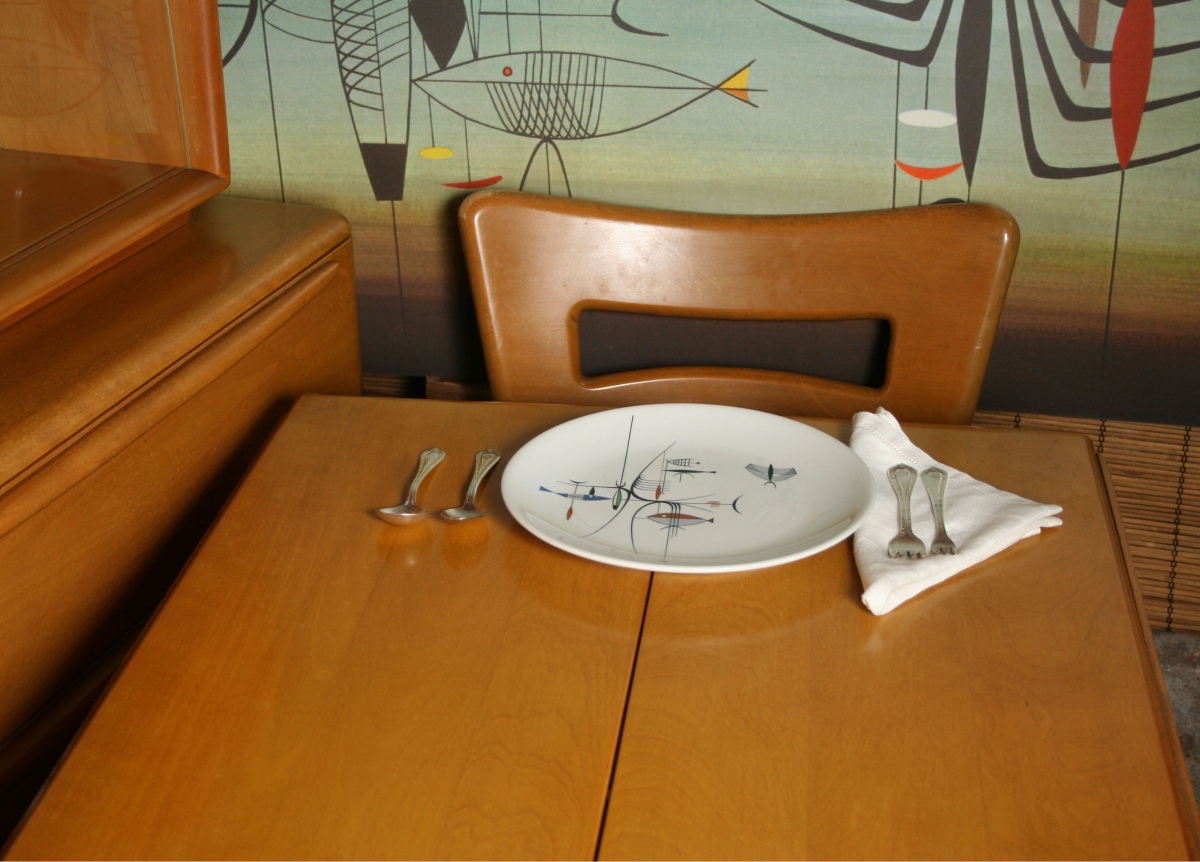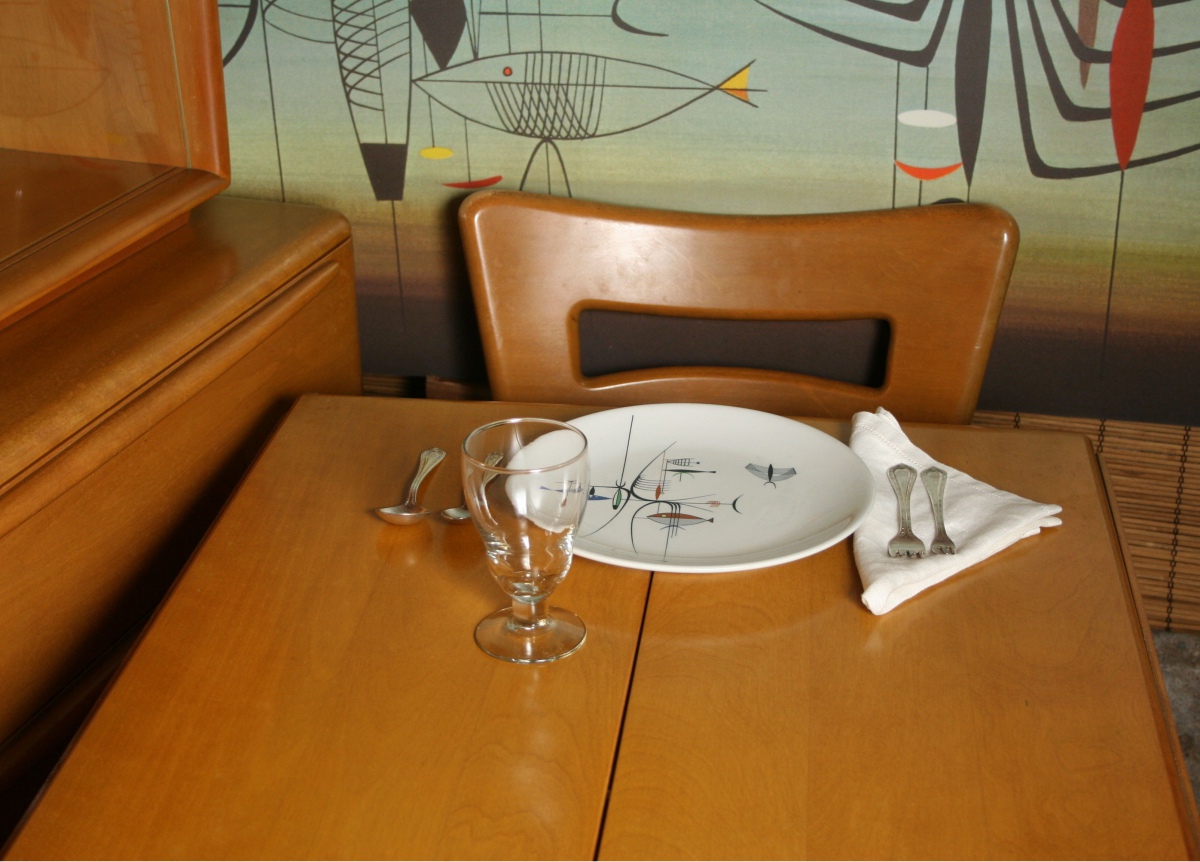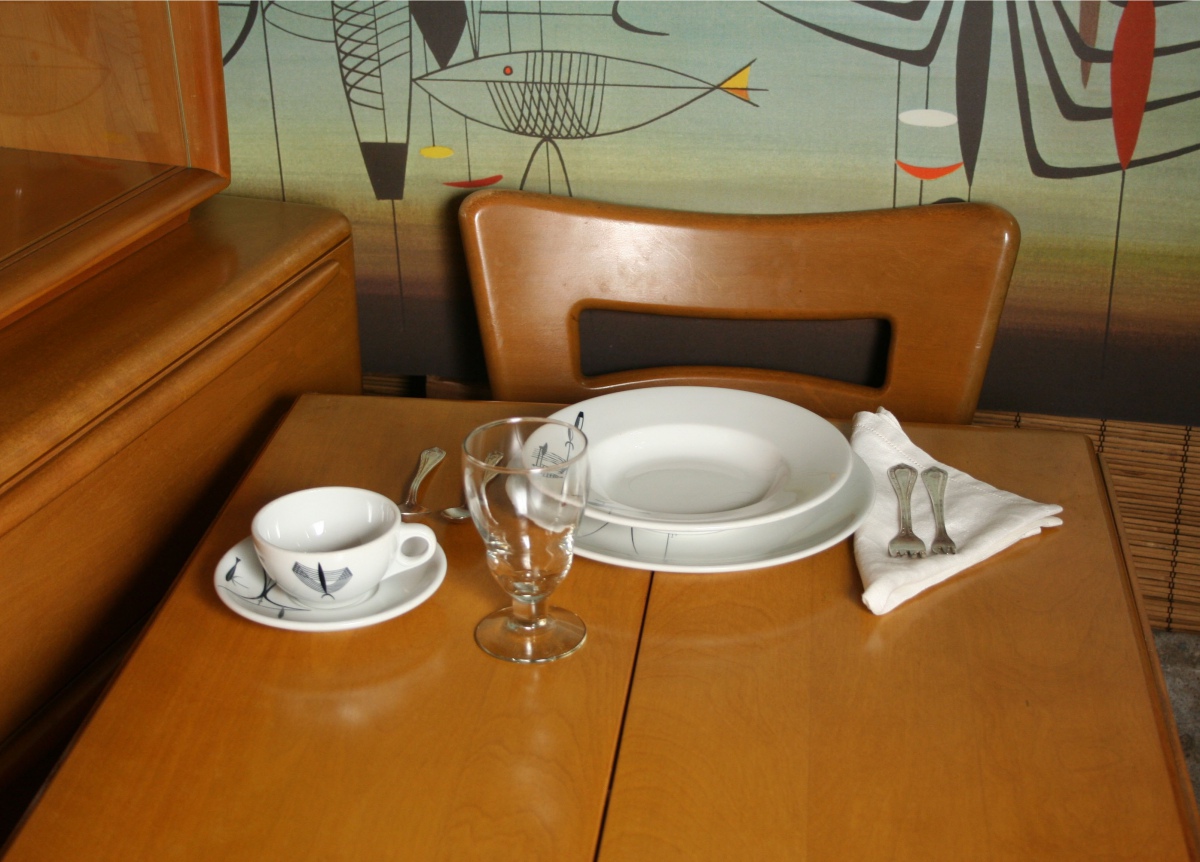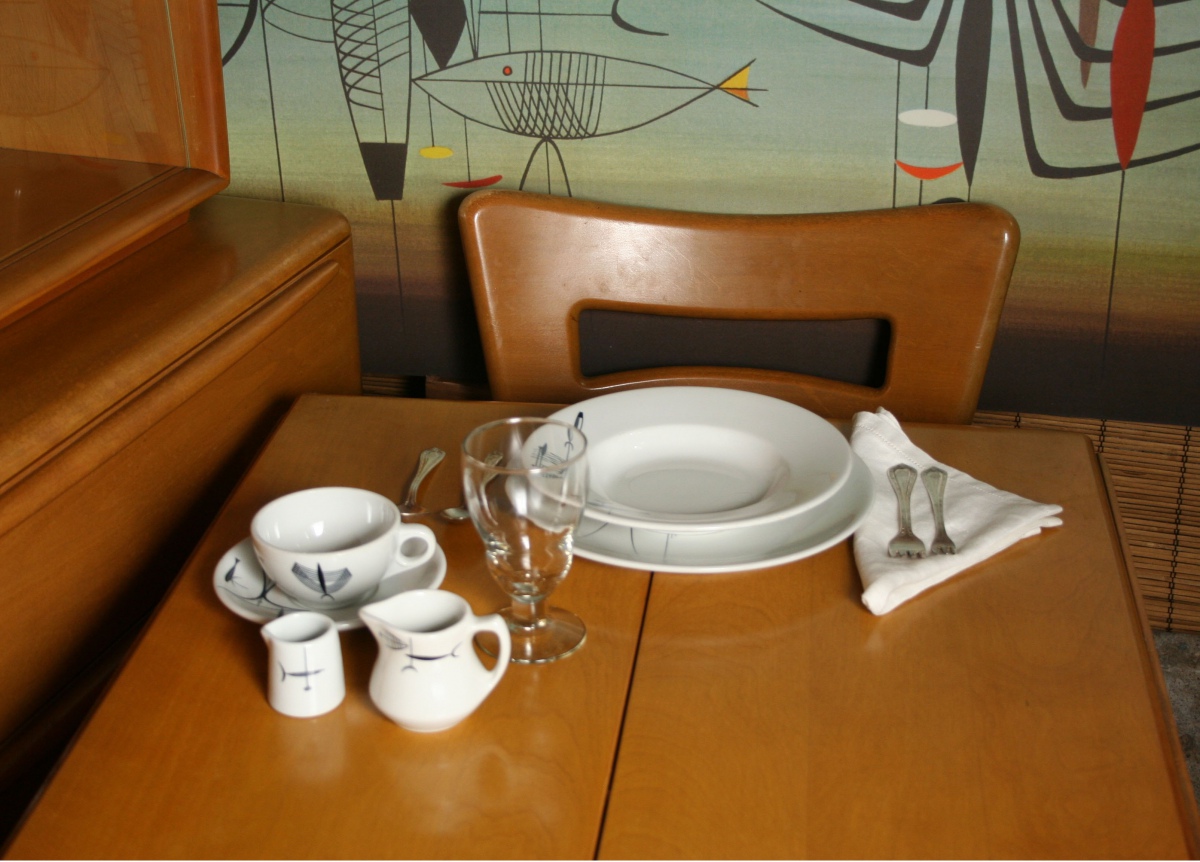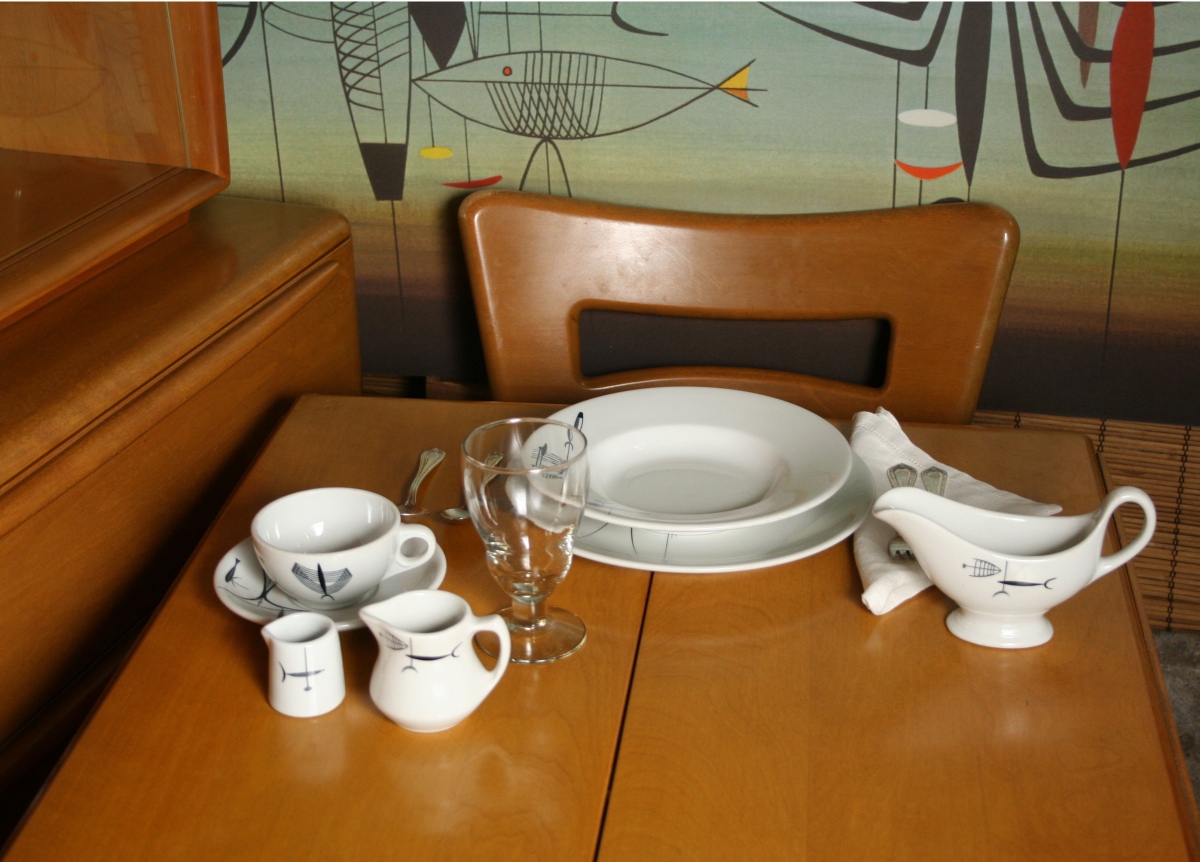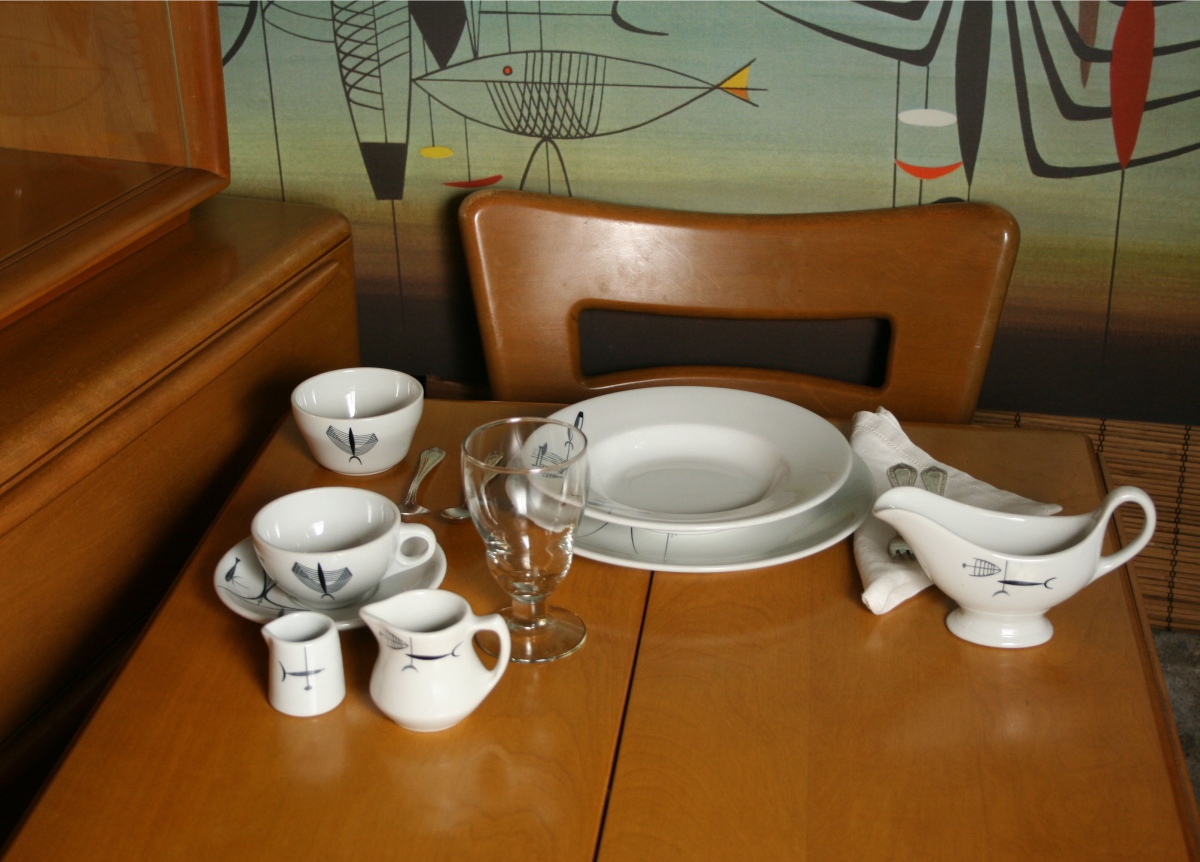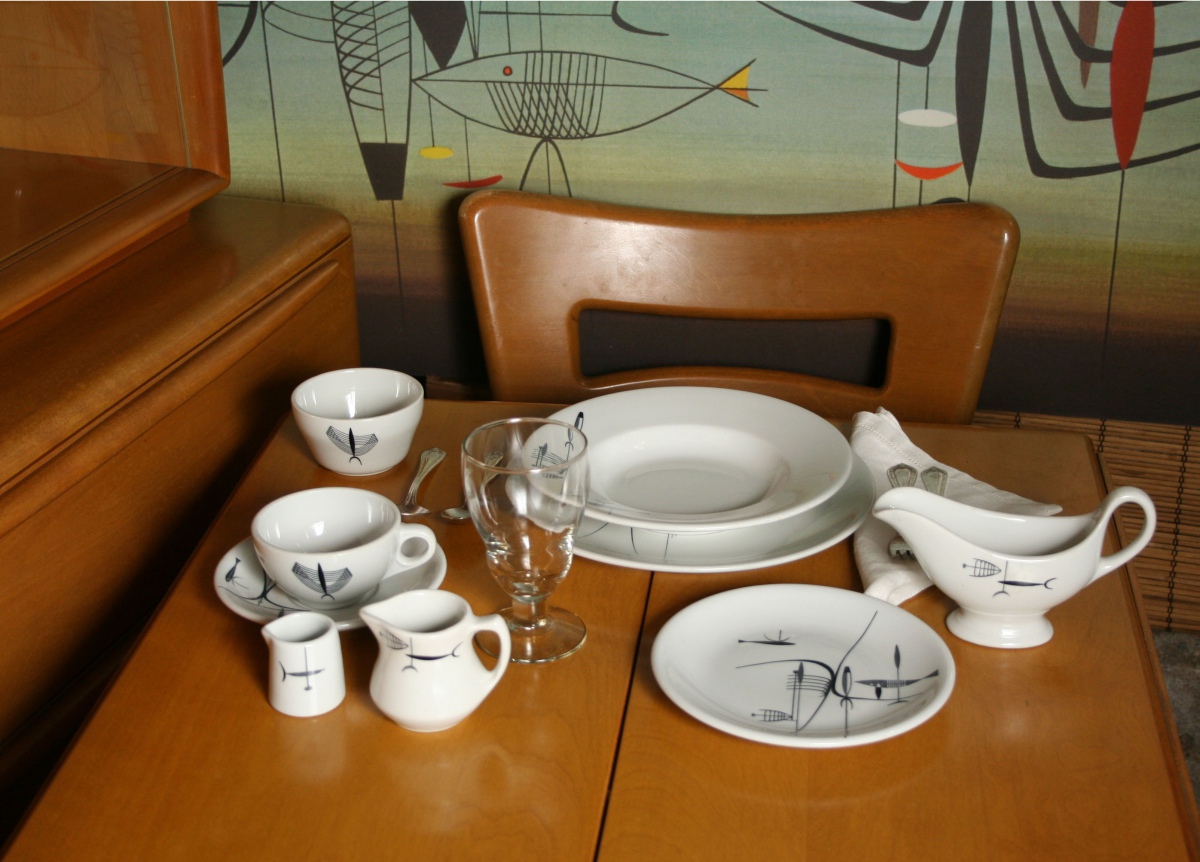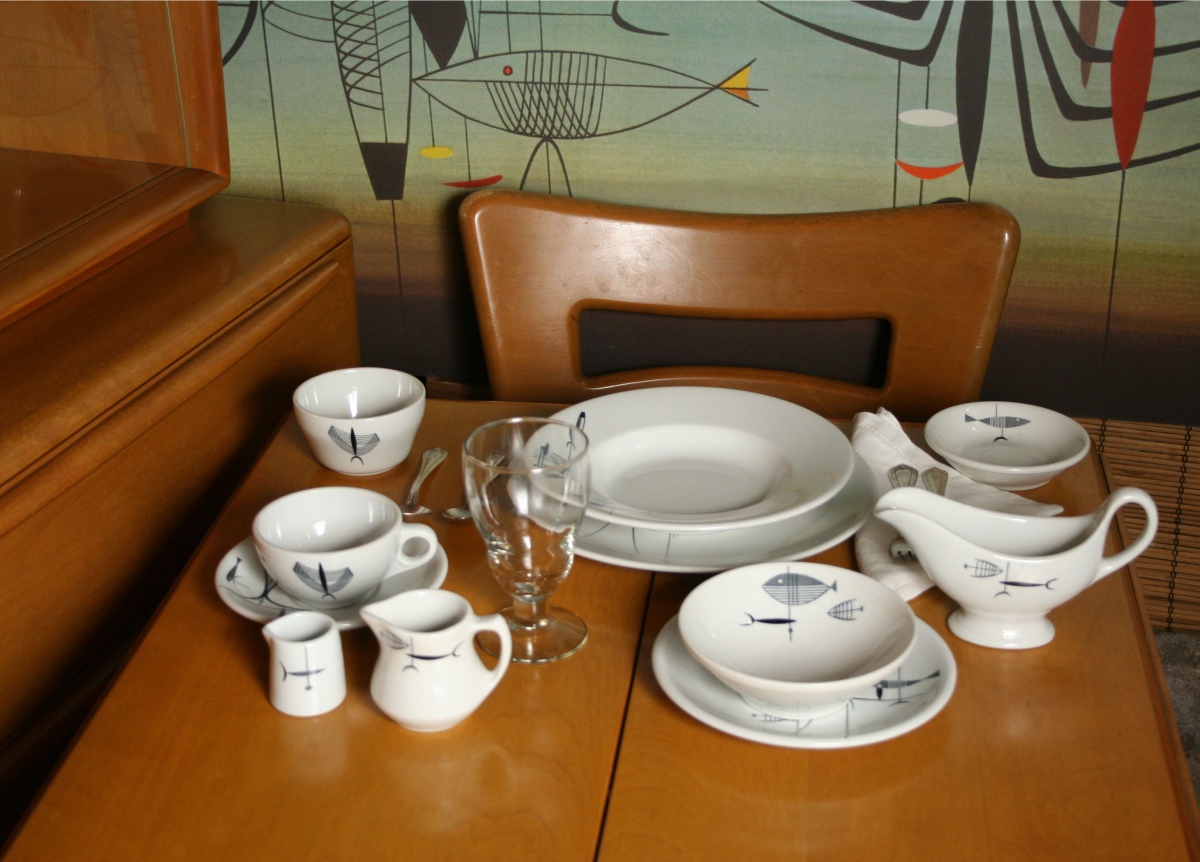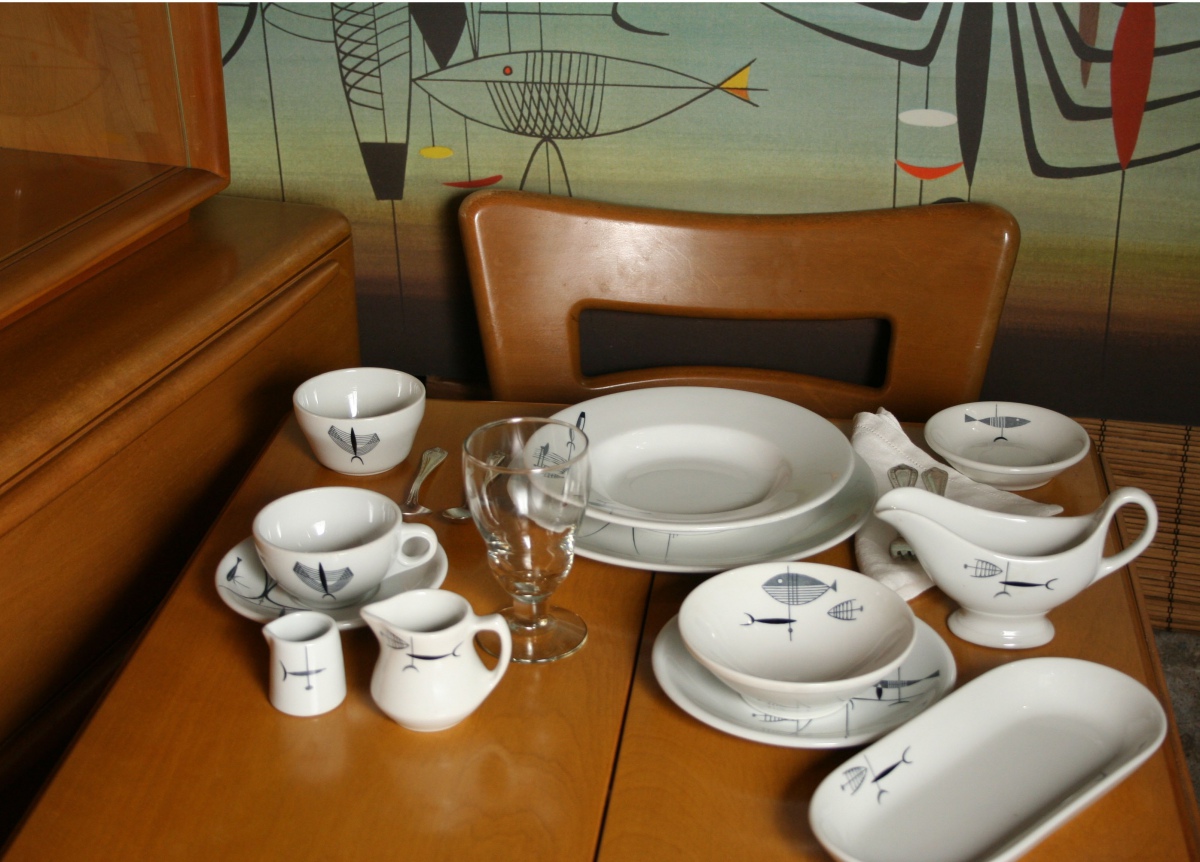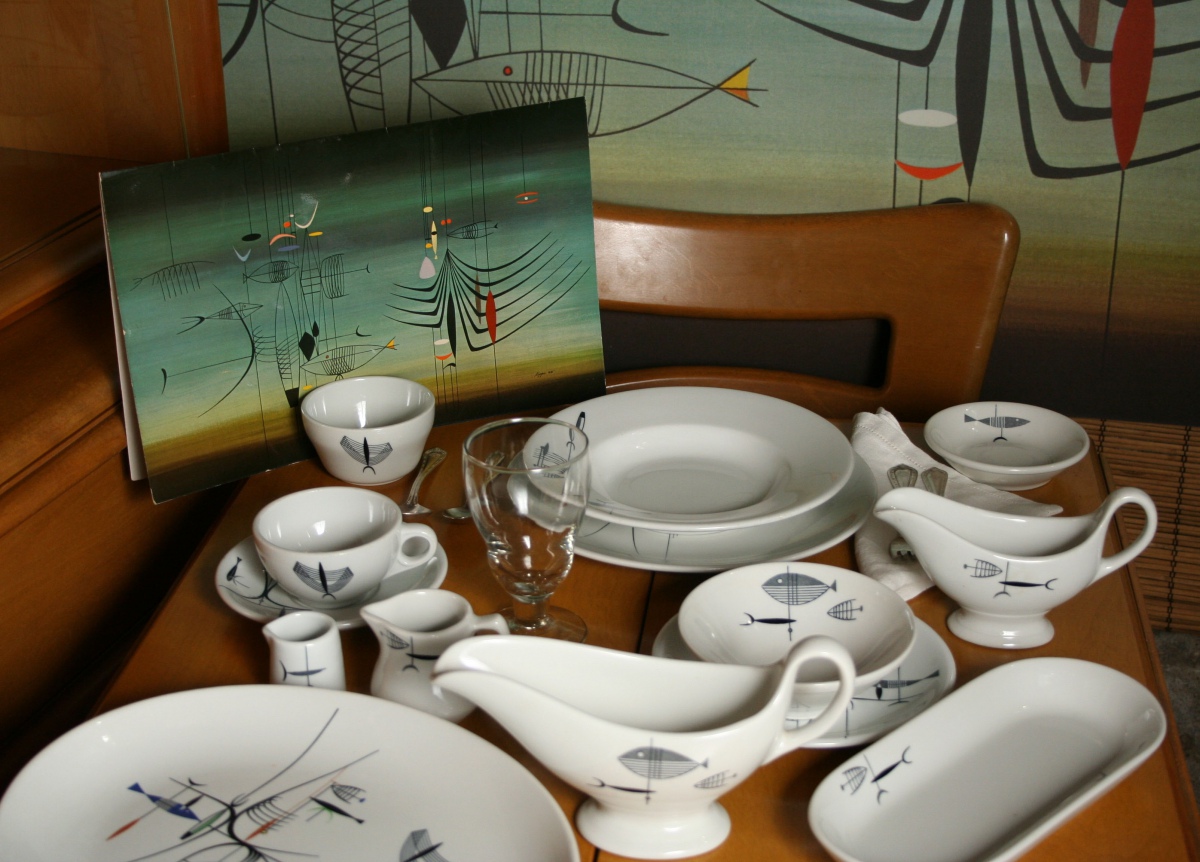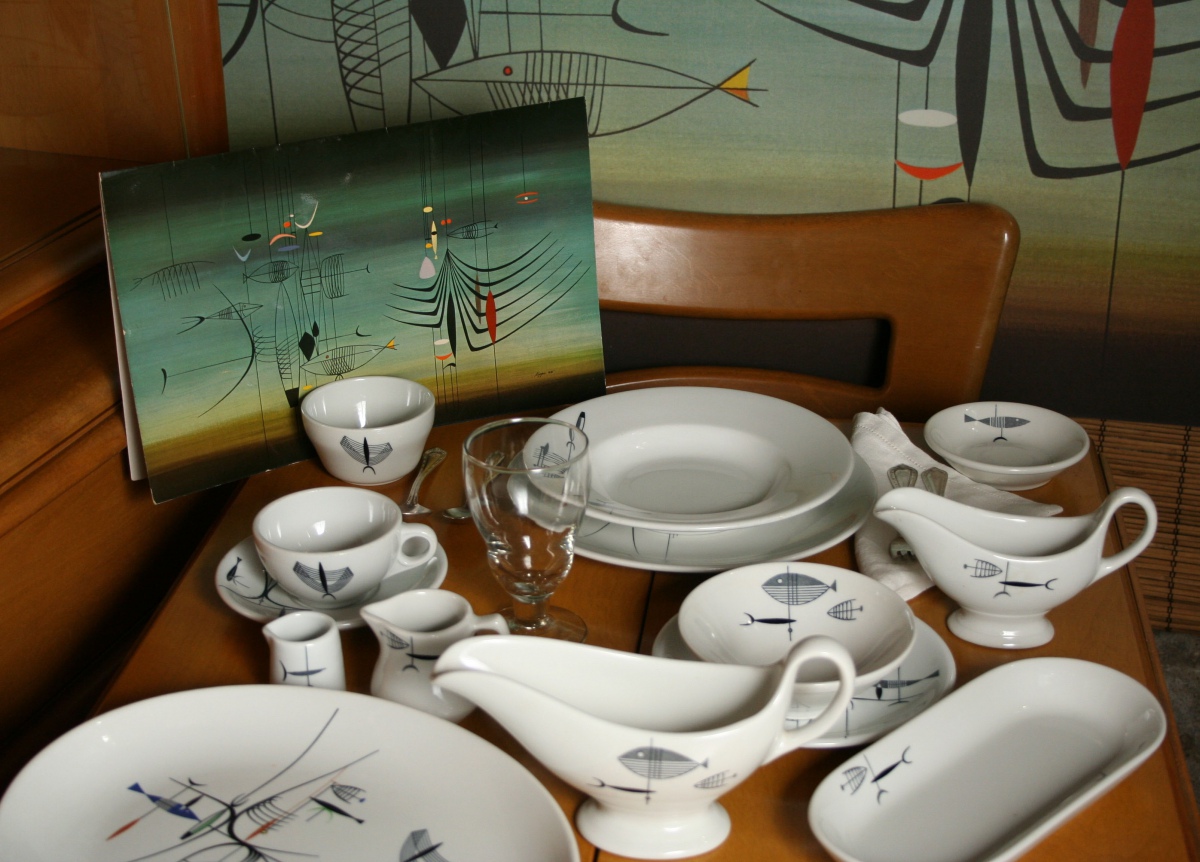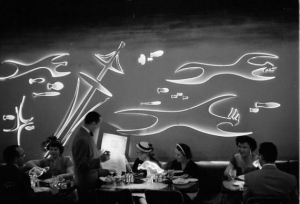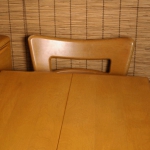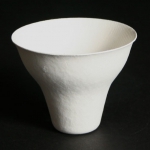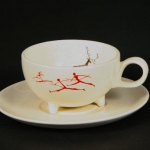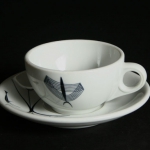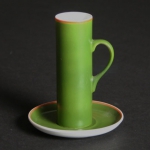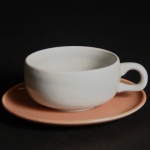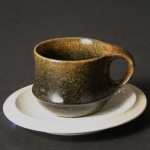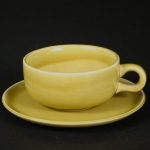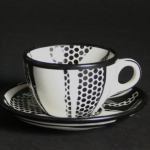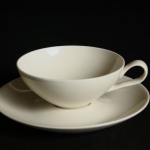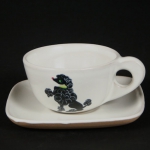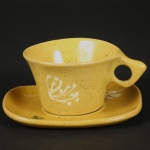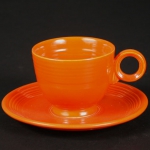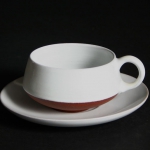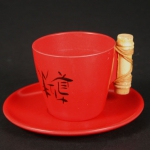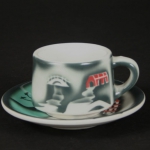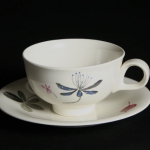well-of-the-sea
[Previous] [Main Page] [Next]
One Table Oodles of Dishes:
Well of the Sea
The Well of the Sea was an acclaimed seafood restaurant located in the lower level of the Hotel Sherman in Chicago from 1948 to 1972. It was no ordinary seafood restaurant. While the seafood cuisine was legendary, it was the restaurant ambiance itself that attracted so many admirers. The interior was designed by artists, architects, and interior designers to evoke the experience of dining under the sea. Rather than a literal interpretation, this was accomplished through the use of abstract murals and sculpture of fish, lures, and bait, all lit dramatically. Additionally, the interior of the restaurant was lit with black lights, so menus, murals, and clothing all fluoresced.
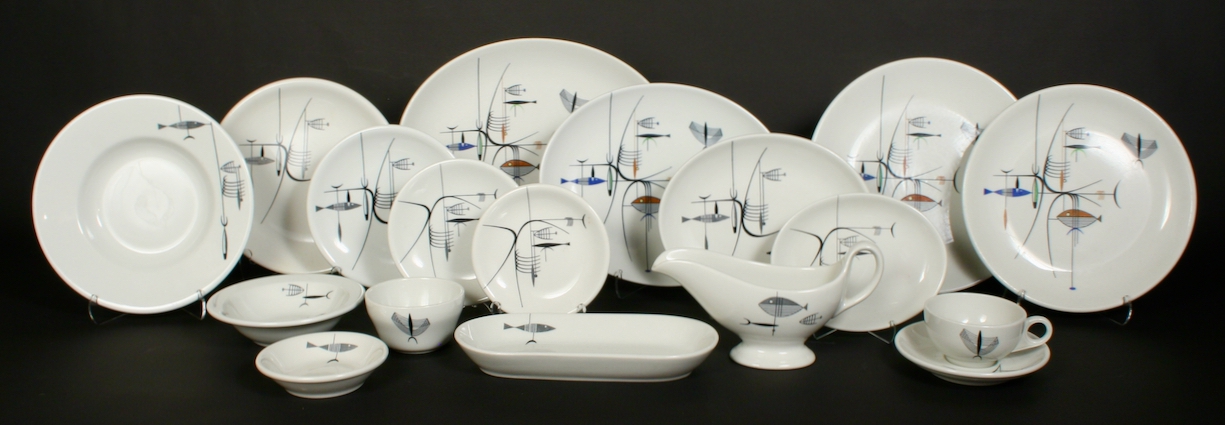
Robert E. Lederer, AIA, is credited as the architect and designer of the interior of the Well of the Sea restaurant. Born in Vienna in 1900, he relocated to Chicago in the late 1940s after design successes in Berlin and elsewhere. The owner of the Hotel Sherman, Ernest Byfield, recruited him to work on the Well of the Sea project.
Because of its remarkable design, there are quite a few photographs of the interior of the Well of the Sea restaurant that were published in Interiors magazine, Art and Architecture, and Art in Modern Architecture between 1949-1952. They feature its abstract murals and sculpture created by Richard Koppe in the restaurant setting. Although one can see dishes on the tables in the photographs, none show the Well of the Sea dinnerware designed and manufactured at Shenango China in Newcastle, Pennsylvania. That is because the Well of the Sea patterned dinnerware was not added until around 1954, based on the earliest backstamps in collections.
Some Well of the Sea dinnerware admirers attribute the design pattern of the china on the Continental shape to the artist Richard Koppe who designed all the murals and sculpture in the restaurant. Indeed, he inspired the fish, bait and lure abstract patterns on the dinnerware, but the lead designer at Shenango China at the time, Paul W. Cook (1924-2016), should be credited with the dinnerware pattern design, according to a phone interview he had with Mid-Century Modern Dinnerware author Michael Pratt. Mr. Cook graduated from New York State College of Ceramics at Alfred University in 1946. He would have been a student of Charles Harder and industrial designer Don Schreckengost. Winslow Anderson, one of the best-known designers at Blenko Glass, was one of his classmates at Alfred. On field trips Paul Cook had visited whiteware manufacturing companies in East Liverpool, Ohio, and in the areas around Pittsburgh, Pennsylvania. Apparently he hitchhiked to New Castle, Pennsylvania right after graduating and was hired at Shenango China on the spot.
The International Museum of Dinnerware Design currently owns 47 pieces of Well of the Sea restaurant ware, including 25 different shapes. A detailed essay, with abundant historic photographs will soon be featured on the IMoDD website. An announcement will be made.
References: Arts and Architecture, “Murals for a Chicago Restaurant, Richard Koppe,” Vol. 66, no. 5, May, 1949; Interiors, “Down to the sea in tips,” Vol. 10, No. 5, May 1949; Mid-Century Modern Dinnerware: A Pictorial Guide Red Wing to Winfield, Michael E. Pratt (Atglen, PA: Schiffer Publishing, 2003).
essay by Margaret Carney, who dined at the Well of the Sea restaurant in the 1960s


